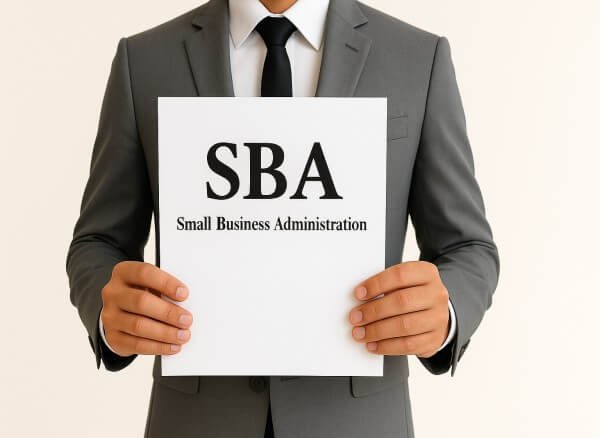Revenue and Employee Limits for Small Businesses Explained
Wondering if your business still counts as “small”? It all comes down to two things: how many people you employ and how much money you bring in. The SBA sets employee and revenue limits that determine whether you qualify for small business loans, grants, contracts, and other support.
Those limits aren’t the same for everyone. Depending on your industry, you could have 10 employees or 500 and still be considered a small business. The same goes for revenue. Some companies bring in over $40 million a year and still qualify under SBA guidelines.
In this article, we’ll break down exactly how the SBA measures employee size and revenue, how to figure out where your business stands, and what to do if you’re close to the cutoff. Let’s clear up the confusion and help you take advantage of the resources meant for businesses like yours.
Why Revenue and Employee Limits Matter
If you’re aiming to tap into any kind of small business support, then your employee count and revenue are more than just numbers. They decide whether the SBA and other government agencies see you as a small business in the first place.
Here’s why it matters:
1. Access to SBA Loans
Programs like the SBA 7(a), microloans, and disaster relief funds are only available if your business falls within the official SBA size standards. Go over the limit, and you may no longer qualify.
2. Eligibility for Federal Contracts
The federal government sets aside billions every year just for small businesses. But to bid on those contracts, your business has to meet specific revenue and employee thresholds.
3. Certifications and Designations
Programs like 8(a) Business Development, Women-Owned Small Business, and Service-Disabled Veteran-Owned Small Business all use size standards to determine eligibility. If you exceed the limit, you can’t get certified.
4. State and Local Grants
Many state and city programs use SBA guidelines to decide who gets funding or local incentives. If you want access to those resources, staying within the size limit is key.
5. Strategic Planning
Knowing whether you’re nearing the limit helps you plan ahead. You’ll be able to shift strategies or explore new funding options if you’re about to grow out of the small business category.
Your revenue and employee numbers directly affect the opportunities you have access to.
Understanding Revenue Limits by Industry
When it comes to qualifying as a small business, the SBA uses average annual revenue as one of the main benchmarks. But it’s not the same across the board. The definition of “small” revenue varies significantly depending on your industry.
How the SBA Calculates Revenue
The SBA looks at your gross receipts, not your profit. That means total income before expenses.
They average these numbers over the past 3 years to smooth out any spikes or slow periods.
Example:
Year 1: $1.2M
Year 2: $1.5M
Year 3: $1.8M
Average = $1.5M in annual receipts
If that number falls under your industry’s limit, you qualify as a small business (at least by revenue).
Common Revenue Limits by Industry
Here’s a quick breakdown of what “small” looks like in a few popular industries:
| Industry | Revenue Limit |
| Retail Store | Up to $41.5 million |
| Marketing or Consulting | Up to $25.5 million |
| Home Health Care | Up to $19.5 million |
| Construction (General) | Up to $45 million |
| Real Estate Agencies | Up to $11 million |
| Online Retailer | Up to $41.5 million |
A Few Things to Know:
- These limits come from your NAICS code
- Some industries use employee count instead
- If you’re close to the limit, track your numbers carefully and plan ahead
Just because your revenue is growing doesn’t mean you’re out of the small business club. But it does mean it’s time to get smart about your next move.
Understanding Employee Limits by Industry
While some industries use revenue to define what’s “small,” others go by employee count. If your business falls into one of these sectors, how many people you have on your team could be the deciding factor in whether you qualify as a small business.
How the SBA Counts Employees
The SBA calculates your employee total based on the average number of employees over the past 12 months. That includes:
- Full-time and part-time workers
- Temporary staff, if they’re on payroll
- Anyone employed directly by you (not freelancers or contractors)
So if you had 90 full-time employees and 15 part-timers working 20 hours a week, you’d still be considered under the limit, as long as your 12-month average stays within your industry’s cutoff.
Common Employee Limits by Industry
| Industry | Employee Limit |
| Manufacturing | Up to 500–1,500 employees |
| Wholesale Trade | Up to 100 employees |
| Telecommunications | Up to 1,500 employees |
| Publishing or Printing | Up to 500 employees |
| Agriculture | Up to 500 employees |
| Transportation & Warehousing | Up to 1,500 employees |
Each industry has its own standard, so it’s important to check your NAICS code to see exactly where your business falls.
Quick Tip:
If you’re a seasonal business and your headcount fluctuates, just average your employee total for each pay period over the last 12 months. That’s what the SBA looks at.
What If Your Business Has High Revenue and Employees?
Sometimes, it’s not just about one number. Depending on your industry, you might have a significant advantage in both revenue and employee count. So how does the SBA handle that?
The good news is that it’s not both; it’s one or the other.
Each NAICS code uses either revenue or employee count, not both, to determine if your business qualifies as “small.” You only need to meet the one standard that applies to your specific industry.
Example Scenarios:
Example 1: Digital Marketing Agency
- Revenue: $2.5 million
- Employees: 12
- Industry limit: $25.5 million revenue
✅ Qualifies based on revenue
Example 2: Manufacturing Company
- Revenue: $20 million
- Employees: 800
- Industry limit: 1,000 employees
✅ Qualifies based on employee count
Example 3: Wholesale Distributor
- Revenue: $15 million
- Employees: 120
- Industry limit: 100 employees
❌ Does not qualify—because it exceeds the employee count, which is the standard used for wholesalers
Important thing to note:
- Your business only has to meet one of the SBA’s criteria for your industry
- Don’t assume you’re small just because your revenue is low—your employee count might disqualify you if that’s the metric used
- Always check your NAICS code to confirm which standard applies
How to Check Your SBA Size Eligibility
If you’re uncertain about whether your business qualifies as a small business, please rest assured, you can determine this in just a few steps. Here’s how to check your SBA size eligibility quickly and accurately.
Step 1: Find Your NAICS Code
The NAICS code (North American Industry Classification System) is the number the SBA uses to identify your industry. Your business might fall under more than one, but choose the one that reflects your primary service or product.
Where to find it:
- Go to naics.com or the U.S. Census Bureau’s NAICS search tool
- Enter keywords that describe your business
- Select the code that best matches what you do
Step 2: Visit the SBA Size Standards Table
Once you’ve got your NAICS code, head over to the SBA’s official size standards table to see your industry’s limit.
Search by your NAICS code to see whether your size standard is based on:
- Average annual revenue, or
- Number of employees
Step 3: Calculate Your Averages
- Revenue: Take the average of your gross receipts over the last 3 completed fiscal years
- Employees: Average your total headcount for each pay period over the past 12 months
Compare those numbers to the limit listed for your NAICS code.
Step 4: Determine Eligibility
If your average falls at or below the SBA’s threshold, you’re considered a small business for that industry.
You qualify for SBA loans, federal contracting programs, certifications, and more. If you’re over the limit, it may be time to plan for what comes next.
What to Do If You’re Near the Limit
If your business is close to hitting the SBA’s revenue or employee cap, you’re not alone. It’s a good problem to have, it means you’re growing. Still, it’s smart to plan ahead so you don’t miss out on support you currently qualify for.
Here’s what to do if you’re approaching the limit:
1. Track Your Numbers Closely
Monitor your 12-month employee average and your 3-year revenue average regularly. Use simple spreadsheets or accounting tools to monitor trends. If you’re getting close, don’t wait until tax season to figure it out.
2. Talk to a Small Business Advisor
Your local SBA office or Small Business Development Center (SBDC) can help you assess where you stand. They offer free guidance on:
- Eligibility
- Loan applications
- Certification requirements
- Transitioning out of SBA programs
3. Plan for What Comes Next
If you expect to grow past the SBA limit, start thinking ahead:
- Will you lose access to certain grants or loans?
- Are there other programs (state, private, or investor-backed) you can tap into?
- Should you begin preparing for mid-sized business needs like HR, legal, or enterprise-level clients?
4. Explore Industry Alternatives
Even if you grow out of SBA support, other options may open up:
- Corporate partnerships
- Joint ventures
- Advanced financing options or angel investors
- Bidding on contracts not limited to small businesses
5. Revisit Your NAICS Code
Occasionally, you may be misclassified. If your business has shifted or expanded, you might fall under a different NAICS code with a higher size limit. It’s worth reviewing with a business advisor or CPA.
Conclusion
If you’re trying to figure out whether your business officially qualifies as “small,” it all comes down to two numbers: how much revenue you bring in and how many employees you have. The SBA uses these size standards to decide if your business can access loans, contracts, certifications, and other key benefits.
Those limits aren’t the same for everyone. They depend on your industry, your NAICS code, and whether your size standard is based on revenue or employee count.
By taking a few minutes to check your averages and compare them to the SBA’s thresholds, you’ll know exactly where your business stands. That knowledge gives you an edge. It helps you plan smarter, stay eligible for support, and grow without missing out on valuable opportunities.
Ready to take the next step? Use the SBA’s Size Standards Table, review your NAICS code, and explore our related guides on SBA loan programs, SBA small business definitions by industry, and how to grow your micro business with confidence.
Frequently Asked Questions
What is the maximum number of employees allowed for a small business?
It depends on your industry. Some small businesses qualify with up to 100 employees (like wholesalers), while others, like manufacturers, can have up to 1,500 employees.
How is small business revenue calculated?
The SBA uses your average gross receipts over the past three fiscal years. This includes all income before expenses, not your net profit.
What happens if my business exceeds the SBA limit?
You may no longer qualify for SBA loans, certifications, or small business set-aside contracts. However, other opportunities may open up, and transition planning is key.
Do part-time employees count toward the employee limit?
Yes. The SBA includes both full-time and part-time workers in your 12-month employee average. Independent contractors are not included.
Can I still qualify if I had one high-revenue year?
Possibly. The SBA averages revenue over three years, so one strong year won’t always push you over the limit.













